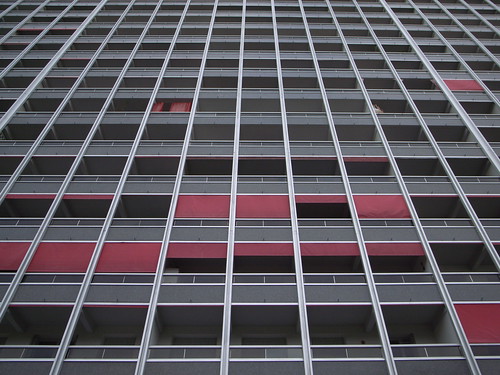A short of summary at the "digital entertainment and mobility" seminar I attended yesterday in Lyon, France. My notes about what I found relevant for my work. The event was organized by Imaginove, a cluster association representing video game companies such as Atari, EA as well as animation/audiovisual producers.
Philippe Jeudy (Sega Mobile)
At SEGA, the mobile gaming department is different from the Mobile console department (Nintendo DS/PSP), which sparked lots of discussion about why (different competencies, different business models) and why not integrating them in a single business unit (even with the game design) to try to create a much more holistic experience, as well as connections/continuity between console games and mobile phone games. From my point of view, in terms of user experience, it's clear that it's not "2 industries" as people use to say in that business... the time spent playing on a Nintendo DS is definitely competing with the time spent on a mobile phone for example. There are different visions there and business examples shows that some like UbiSoft prepare selling their shares from their mobile arms (Gameloft) whereasr Electonic Arts is more integrative, as I've been told by a manager from EA Mobile Europe.
The most interesting part of Philipe's talk concerned the limits in the mobile gaming domain:
- hardware and software: the mobile is no yet a laptop, smart phone only 5% of the european market (I've seent he same figure 2 years ago... the evolution is dead slow). When it comes to downloading a basic games, 15 millions of people in France can do it (out of 43 millions of call phone users). In addition, developing games for more than 300 models is terribly difficult (different resolutions...) then.
- Network constraints: apart from 3 in italy, the mobile internet is not broadband (still have to wait 18-24 months).
- Conditions of sales for phones, and people often don't know how to use them
- Very complex return on investment, much more than the web
- Usage and practices are still fuzzy, but research gives some hints
- (Flat) Mobile Internet Fee aren't there yet, it's still way too expensive.
He also challenged the idea that the future of video game is on cell phone... a sort of gung-ho statement that is a bit fuzzy. Of course, as he said, there is a good and exciting potential but what happens is rather that mobile gaming support the trend started by Nintendo with the Wii and the DS about expanding its user base.
Currently when an editor sells a game for 5 euros, it earns 1... which is really low to invest in R&D, marketing, etc.
Marie-Christine Crolard-Lepany (NPA Conseil)
A consultant in new media forms, she gave a very good overview of the near future changes to be expected about mobile television, comparing point-to-point/unicast (streaming on cell phone using 3G networks) to broadcast (one content broadcasted to all through DVB-H). The interesting thing with DVB.H is that it can reach lots of mobile devices (phones, mp3/video players, etc). Unlike streamed videos on cell phones, there is a crux need for quality images and no lag in this case.
She talked a bit about the demand for such mobile broadcast. The first demand concerns the accessibility to existing content (tv channels and shows that people miss). Showing charts, she demonstrated how the audience curves are different from home-tv, with peaks between 6-8pm (big peaks in home tV are after 8pm). They discovered that most of tv-channels are wondering what to put there.
The main limit she mentioned in mobile situation is the autonomy of the device, lots of people need to limit their mobile-tv usage on their phone, to keep some power left for using it to communicate with others.
Anne Bationo-Tillon (France Telecom R&D)
Anne, an HCI/ergonomist researcher addressed the usages and practices of mobile devices related to Mobile TV, through various studies her team carried out at Orange. The sort of studies they do are mostly qualitative, aiming at revealing usage logics and dynamics about reception/production of contents, when and where they are used and the link with the context in which they're employed.
Some results:
About the place where mobile contents are consumed:
- at home: sit or on bed (protected space), avaiability of preferred content (when dad or husband is watching soccer) or used as a second screen. The interesting aspect they notice is the flexibility of the posture in diverse situations (people laying on bed and looking at the phone above)
- "static mobility": sat in public transport, or in gardens...
The content is mostly consumed as an interstitial moments (free time, between two activities), also targeted at short contents. Some means: For 3G: 10minutes, For Video glasses: between 20 and 45 minutes, for laptops: 90minutes. As for the links with the environment: in private places = to isolate oneself (one's "bubble") and in public places to be disengaged from others (in public transports for example) and get some distractions.
Anne also tried to describe her vision about the mid-term evolution of mobile devices. Some highlights she gave:
- a different place depending on the ages: multimedia (kids) versus instrumental/utilitarian object (more than 30s)
- the range of usages is increasing depending on the memory of mobile phone
- purists will still have their dedicated devices (console for gaming, camera for pictures) but the cell phone is a way to replace them when you can't carry lots of thing or in certain contexts.
- a fine and reinforced articulation between the mobile phone and other devices... As Ernest Adams (that I mentioned the other day), she claimed that other mobile devices will include phone (or communication) capabilities. It's indeed the case with the DS and the pictochat but the inclusion of 3G in a game console or a digital camera remains to be seen...
Why do I blog this? a very interesting overview of the area, and good discussions with practitioners who really have pragmatic issues far from über cool pervasive gaming applications (but still opened to hear about it).



 Time for me to give a very warm and special thanks to TECFA (University of Geneva, see the unit logo here), the research unit where I did my masters and which accepted to host my blog for the last 4 years. I am especially grateful to
Time for me to give a very warm and special thanks to TECFA (University of Geneva, see the unit logo here), the research unit where I did my masters and which accepted to host my blog for the last 4 years. I am especially grateful to 






